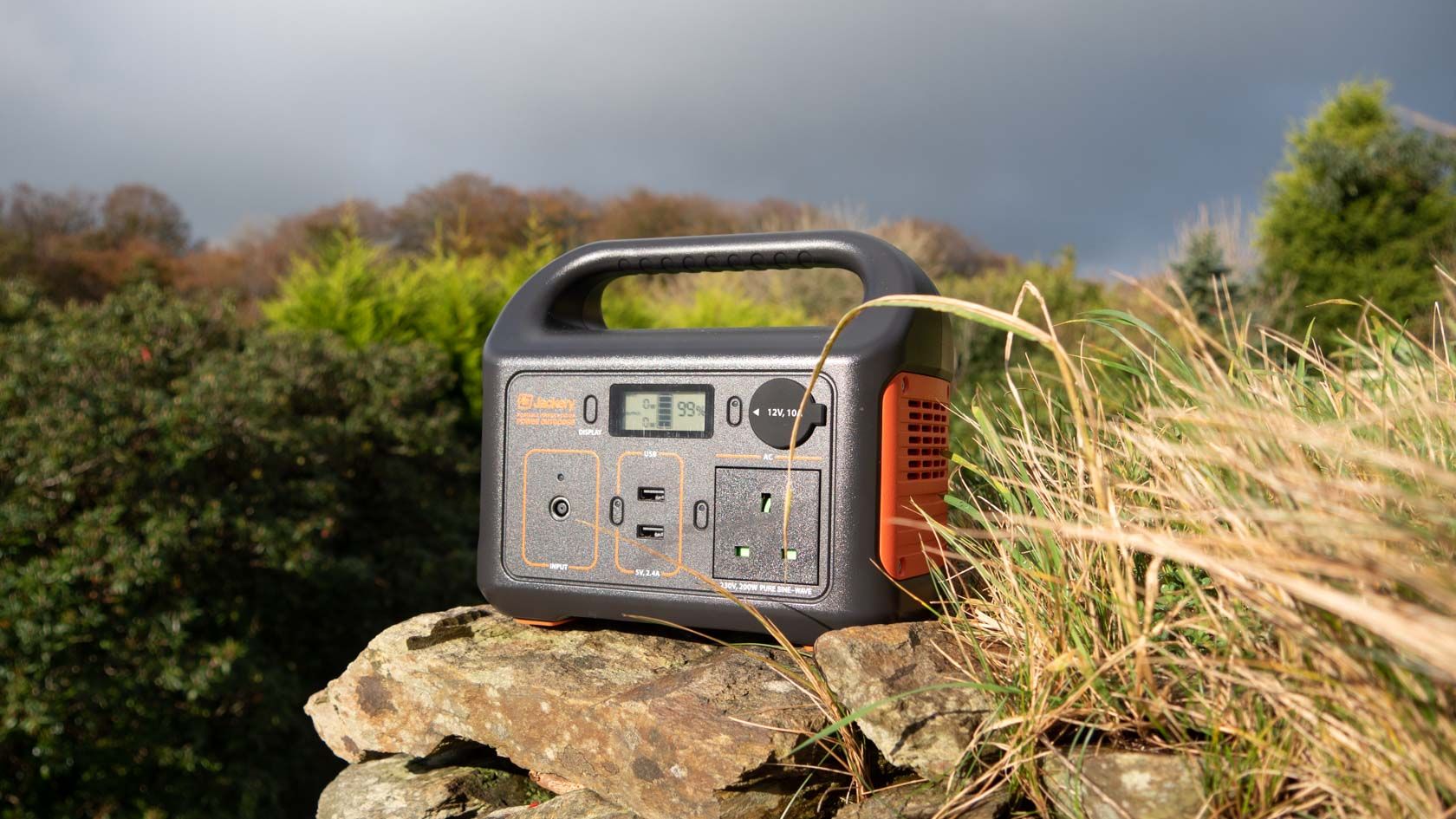
An essential part of any household emergency resilience toolkit, the only downside to the Jackery Explorer 240/250 is the eight hour charge time.
As millions of Californian residents face rolling power outages, it’s fair to say that natural disasters are increasing in both intensity and frequency. Having your own source of electricity in an emergency has never been more important, particularly if you’re reliant on powered medical devices.
The Jackery Explorer 240/250 is an essential bit of kit for every modern household to include in their resilience plans. It retails for $250, stores a whopping 250 watt-hours of energy, and weighs less than 7lbs.
Note: we’ve reviewed the Explorer 250 model, a UK version of the Explorer 240. It’ll be available to buy in the UK next year, but the product itself is functionally identical to the Jackery Explorer 240, just with a different plug socket and output voltage.
What’s a Watt-Hour?
A watt-hour is the amount of power required to run a device that uses a watt of energy for an hour. So a 250 watt-hour (wH) battery holds enough power to run a 250-watt device, for an hour.
In reality, the Jackery Explorer 240/250 is limited to a continuous output of 200 watts. A more real-world example might be a 5m LED strip running at full white brightness, which can use up to 50 watts. The Jackery could power this for around 5 hours.
Another comparison might be your smartphone. Mobile batteries are typically stated in milliamp-hours rather than watt-hours, but the two can be converted easily enough as long as you know the voltage. A typical smartphone battery is usually 10-12wH, so you could fully charge your mobile battery around 20-25 times from the Jackery, if that’s all you were doing with it.

AC Power Output
The key difference between your average mobile battery and this, other than the sheer amount of power stored within, is the ability to plug in AC electrical devices. The only restriction is that you can’t draw more than 200W continuous or 400W peak on the Explorer 240/250 model. This means you couldn’t plug in, for example, a kettle, or other induction heating appliance, which can exceed a few kilowatts. Most refrigerators use 100-400W. CPAP machines are 30-60W, so would happily work with this.
Before purchasing with the intention of using it with a specific device, check the packaging to find out exactly what the power requirements are. Divide 250 by the wattage to get a rough running time in hours. If the device needs more than 200W or the running time is too short, you may need to consider the larger model. The Jackery Explorer 500 stores twice as much power, and allows up to 400W continuous.

Sockets Everywhere
In addition to the AC power outlet (that’s a UK socket you see in the photos), there are also two fast-charging 5V USB ports at up to 2.4A, and a car/cigarette lighter socket at 12v 10A.
All the plugs can be used simultaneously, and each type is individually switched, requiring a single button press to activate. However, bear in mind that everything you plug in contributes to the overall 200W limit. So a phone charging at the full 2.4A would use 12W.

Helpfully, an illuminated LCD display shows exactly how much power is being drawn at any time (albeit with a few seconds delay).
The device itself is fairly rugged with the solid black and orange ABS case featuring a helpful carrying handle on top. Measuring 5.2 x 9 x 7.7 inches, all the ports and the LCD display are found on one side. The display can be activated briefly even when nothing is plugged in, to check at a glance precisely what percentage of battery power is left.

Charge Time
Included in the package is a neoprene case containing two charging options. The first is a basic AC power adaptor; this takes 8 hours to fully charge the Jackery Explorer 240/250. The second option is a car adaptor for on-the-go; this also takes 8 hours. Be careful to only charge from your car battery when you’re actually driving, otherwise, you may drain the car battery entirely.
As an optional extra, you can also purchase a 60W or 100W solar panel. This option takes a little longer at around 10 hours, and that’s assuming a reasonably bright day.
All the charging methods connect through a single standardized 8mm DC input socket. This is a common connector, so you may find third-party products that do the job too. Input is limited to 42W, which is why it’ll take at least 8 hours to charge. This is the biggest downside to the Jackery Explorer 250, and it’s shame they didn’t develop some quick charging technology that restores 90% of power in an hour or two.

On the plus side–and this is a huge plus–you can simultaneously use and charge the battery. Again though, keep in mind both input and output wattage. Since the input is limited to a maximum of 42W, if you’re taking more than 42W on the output side then it will still drain the battery eventually.
The most useful aspect of this simultaneous charge and use will be to simply extend the battery life using a solar panel. As a quick example, if you had a 100W device running off a fully charged Jackery 240/250, it would normally last around 2.5 hours. With the solar panel plugged in and charging at the maximum rate, your usage time would be extended to just over 4 hours.

Should You Buy the Jackery Explorer 240/250?
As the name suggests, the Jackery Explorer range is aimed more at outdoorsy types who need some power on the go; camping or fishing trips, that sort of thing. For that, it’s ideal, no doubt. You can power all the things. For a long time.
But I would argue that keeping an emergency source of power at home should also be high on your list of priorities, and the Jackery Explorer range is perfect for that too. Even if it’s just to keep your phone powered for two weeks and maintain lines of communication, having access to backup power during an emergency could make all the difference.
The only reason not to buy the Jackery Explorer 240/250 is if you need more power. In which case, the Explorer 500 probably has you covered, albeit at twice the price.
Please, don’t wait until emergencies actually happen to try and prepare for them.
Enter below for your chance to win a Jackery Explorer 240. Please note, this competition is only open to US residents as the UK model is not available yet.
Enter the Competition!
Read the full article: Jackery Explorer 240/250: Emergency Power Backup for All The Things
from MakeUseOf https://ift.tt/2Cp2j9n
via IFTTT




0 comments:
Post a Comment